

|


|
|
1/10 Scale Electric Rally Car:
Kyosho Mitsubishi Nikon Pajero - 3038
|
Released by Kyosho circa 1993, the Mitsubishi Nikon Pajero Rally Car - # 3038 - is of the winning car in the 1992 Paris-le Cap Rally, from Paris to Capetown, driven by H Aureal and piloted by PH Monet.
The Kyosho model was based on the Lazer Alpha Buggy Chassis (3036), and came as an unassembled kit, with an unpainted clear lexan Bodyshell, a Le-Mans Stock 05 Motor, servo operated Rotary Mechanical Speed Controller and semi pneumatic Tires. A Radio System, 7.2V Battery and Charger to be purchased separately.
The 4WD model is belt driven, on a molded plastic chassis, with gear type differentials, coil spring over oil filled dampers, dogbone drive-shafts and bushings.
Models based on the same chassis and covered in our Kyosho Archive include: Toyota Celica Turbo 4WD - # 3037, Mitsubishi Nikon Pajero - # 3038, Calsonic Skyline GT-R - # 3039, Ford Escort RS Cosworth - # 30311, and Alfa Romeo 155 V6 TI - # 30312.
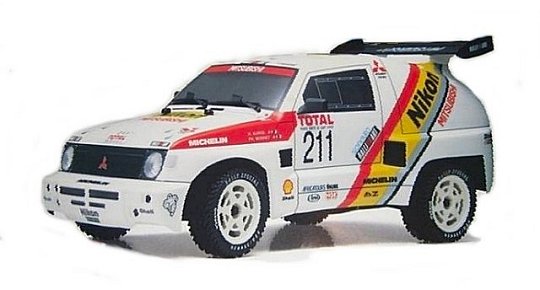
To race the Kyosho Mitsubishi Nikon Pajero, it calls for fine tuning to attain better steering response and improve grip when cornering so you don't slide off the side of the track. Minute changes can make huge advancements. Our easy to understand list will show you how and lead you to the optimum Set-up to put you in front of the rest on the track.








|
|
|

★ Kyosho Mitsubishi Nikon Pajero - 3038 - Box ★
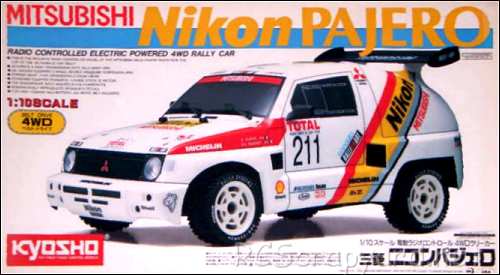
★ Kyosho Mitsubishi Nikon Pajero - 3038 ★
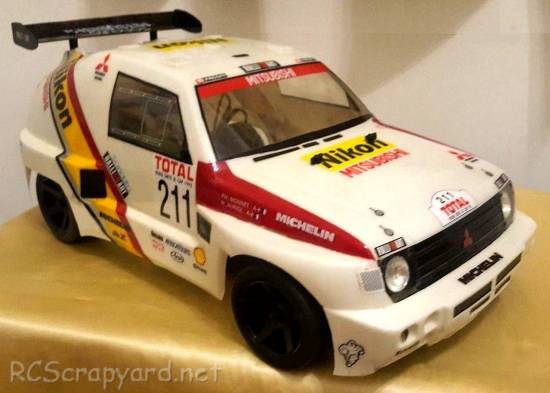
★ Kyosho Mitsubishi Nikon Pajero - 3038 ★
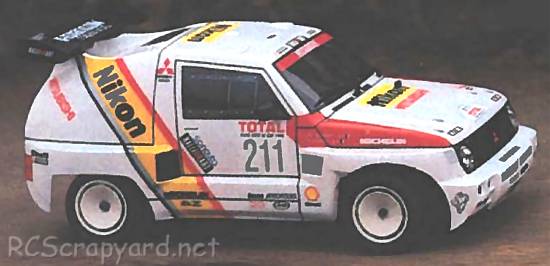
★ Kyosho Mitsubishi Nikon Pajero - 3038 - Chassis ★
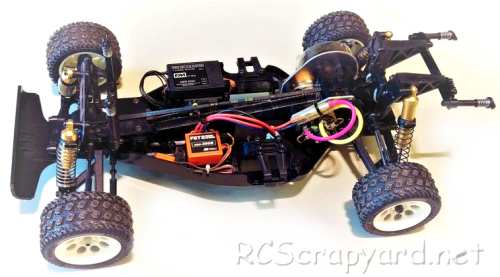
★ Kyosho Mitsubishi Nikon Pajero - 3038 - Chassis ★
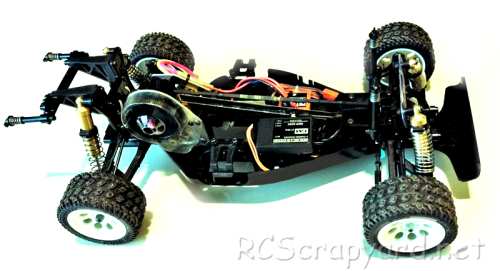
★ Kyosho Mitsubishi Nikon Pajero - 3038 - Chassis ★
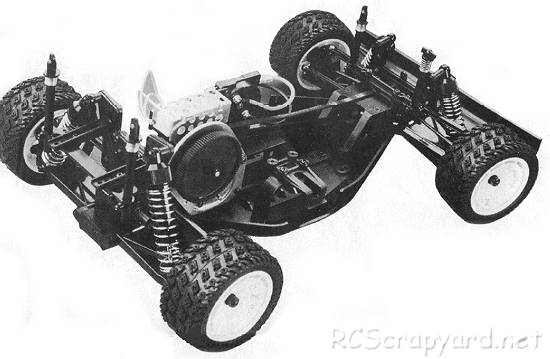
★ Kyosho Mitsubishi Nikon Pajero - 3038 - Chassis ★
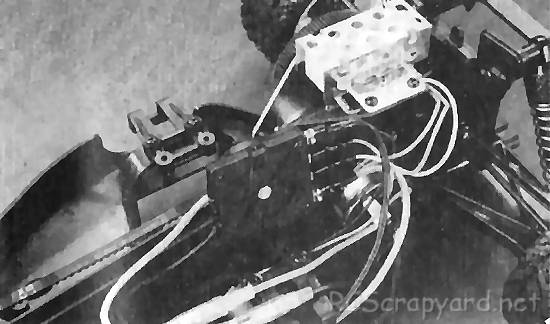
★ Kyosho Mitsubishi Nikon Pajero - 3038 - Chassis ★
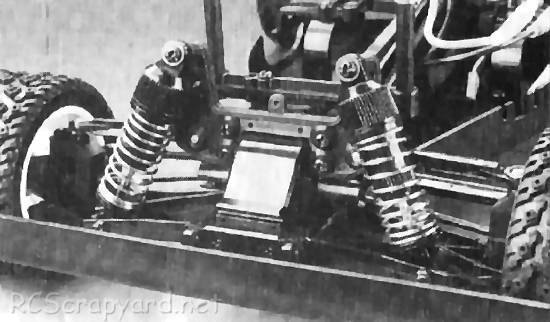
★ Kyosho Mitsubishi Nikon Pajero - 3038 - Chassis ★
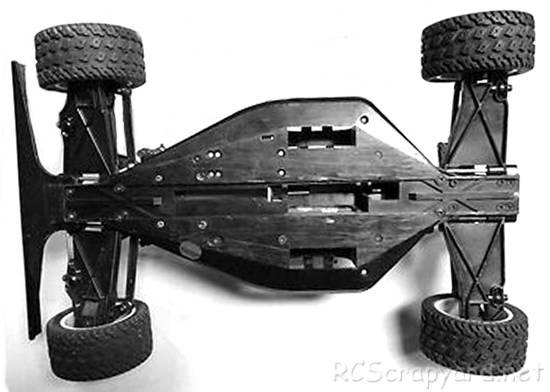
★ Kyosho Mitsubishi Nikon Pajero - 3038 - Chassis ★
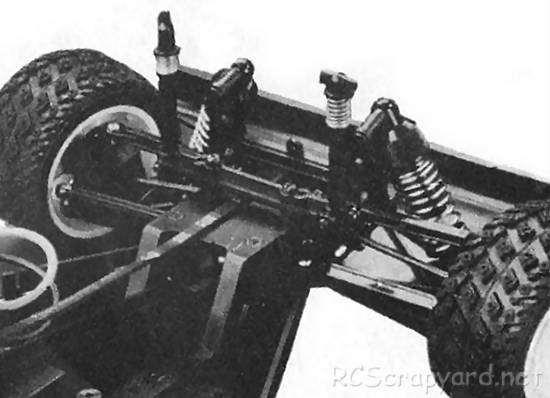
★ Kyosho Mitsubishi Nikon Pajero - 3038 - Chassis ★
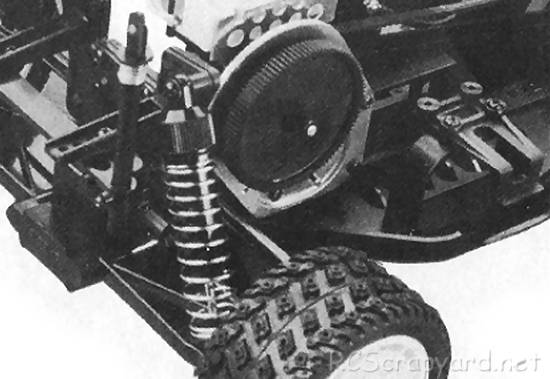
★ Kyosho Mitsubishi Nikon Pajero - 3038 - Chassis ★
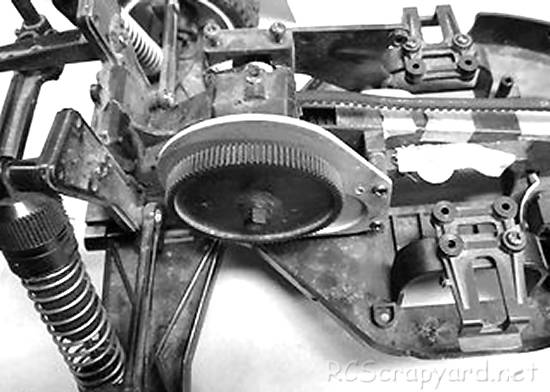
★ Kyosho Mitsubishi Nikon Pajero - 3038 ★
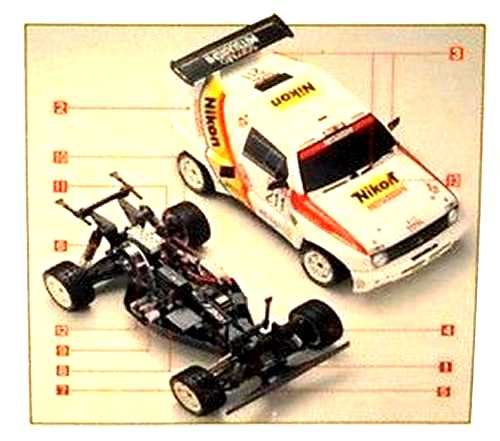
|
Buying a Used Kyosho Mitsubishi Nikon Pajero
|
|
Manufacturers and Brands Catalogued, Listed and Reviewed by RC-Scrapyard.
At present, the RC Model Manufacturers, Brands and Distributors covered by us are: ABC Hobby, Academy, Acme Racing, Agama Racing, Amewi, Ansmann Racing, ARRMA, Team Associated, Atomic RC, Axial, AYK, Bolink, BSD Racing, Capricorn, Carisma, Carson, Caster Racing, Cen, Corally, Custom Works, Durango, Duratrax, ECX - Electrix, Exceed RC, FG Modellsport, FS-Racing, FTX, Fujimi, Gmade, GS-Racing, Harm, HBX, Helion, Heng Long, Himoto Racing, Hirobo, Hitari, Hobao, Hong-Nor, Hot Bodies, HPI, HSP, Intech, Integy, Jamara, JQ Products, Kawada, Kyosho, Losi, LRP, Maisto, Mardave, Marui, Maverick, MCD Racing, Megatech, Mugen, New Bright, Nichimo, Nikko, Nkok, Ofna, Pro-Pulse, Protech, PTI, RC4WD, Redcat Racing, RJ-Speed, Robitronic, Schumacher, Seben, Serpent, Smartech, Sportwerks, Step-Up, Tamiya, Team-C Racing, Team Magic, Thunder Tiger, Tomy, Top Racing, Traxxas, Trinity, Tyco, Vaterra RC, Venom, VRX Racing, WLToys, X-Factory, Xmods, Xpress, Xray, XTM, Yankee RC, Yokomo, ZD Racing and Zipzaps. |
|
Hints, Tips and Information
Rubber Tires for RC Models
Rubber Tires ALWAYS should have either soft sponge or rubber inserts. They will not function as they should without them. And if you are totally serious about your racing they should be glued to the rims. How to Mount Rubber Tires onto Wheels/Rims.
Before mounting your Tires, I would recommend talking to the more experienced racers at your local club, concerning what inserts they use. Even the top level racers rely on a bit of local knowledge on tracks they have never raced before. |
|
Hints, Tips and Information
Radio Frequencies - be Careful be Safe
After buying your first car, it won't be long before you need more than simply bashing around the back yard, or out on the street. So you will be looking around to find a club that is not too far away where you can do some serious racing. |
|
RC Models:
|
Radio & Motors: |
Other
Accessories: |